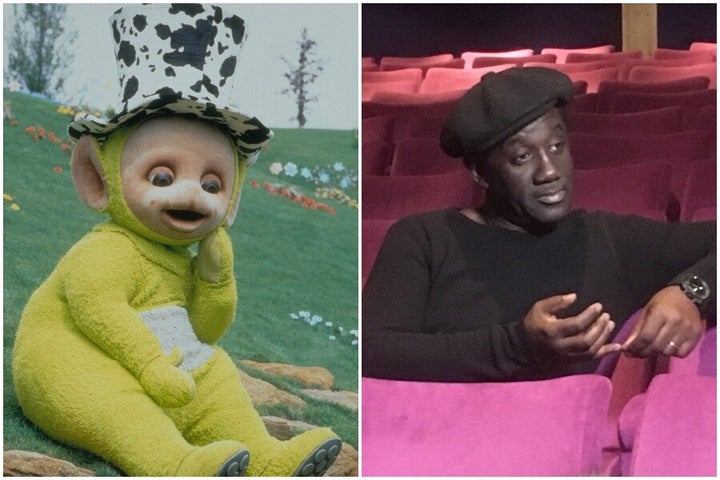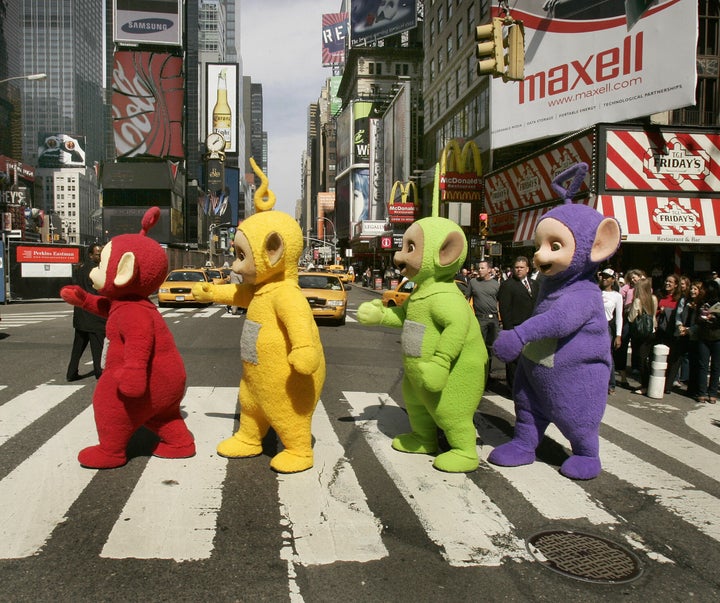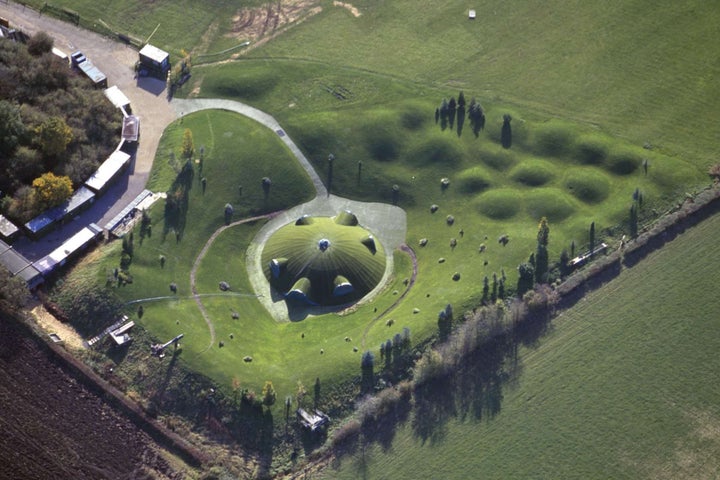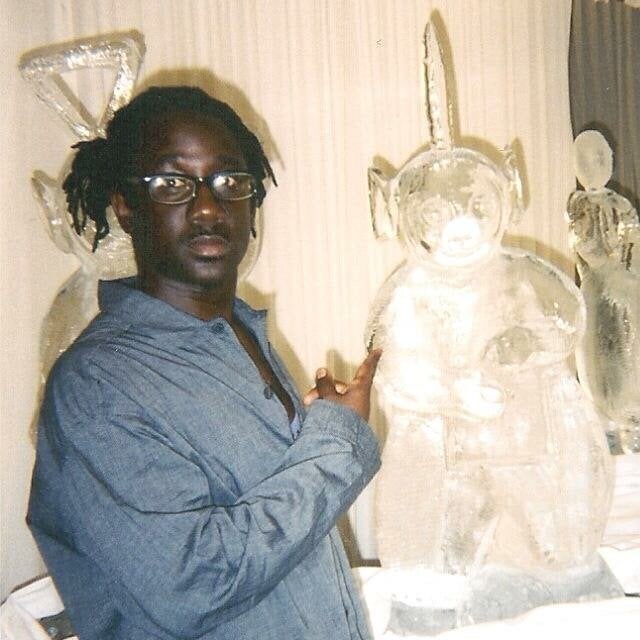Dipsy was always the maverick of the Teletubbies, the one who refused to go along with the others. In many ways, he reflected John Simmit, the man inside the three-stone lime green suit, who proudly brought his heritage to the role.
“Being a Cuban-Jamaican-Brummie and coming from a comedy and music background, I used that to my advantage and there were a lot of cultural references,” Simmit tells HuffPost UK.
“Dipsy would say, ‘Papa Come Papa Come To Po’, which was actually my take on a classic reggae rhythm track called The Whip. And I’d slip in Jamaican dance moves, a Bogle there and a Tatty here. People spotted my little wink to my culture and I’m proud of that.”
The original Teletubbies, featuring the inimitable Tinky Winky, Dipsy, Laa-Laa and Po, launched in 1997 and aired in more than 120 countries and 45 languages. The show’s initial 365 episodes – which completed 20 years ago in February 2001 – inspired £1bn in merch sales. It was toddler TV gold.
The gang received the keys to New York City and even scored a hit single, Teletubbies say Eh-oh!, which was on track to be 1997 Christmas number one, only to be knocked off the top spot by Spice Girls. The rainbow fab four had reached the heights of Beatlemania – only it was less Yellow Submarine, more the lush rolling green hills of Teletubbyland.

“Running around in a three-stone and eight-foot tall bright green costume in the summer is not fun,” says stand-up comedian and DJ, Simmit, of clumping about the field in Stratford-upon-Avon where Teletubbies was originally filmed.
“At least I had a six-pack at the time. You had to roll up and down hills, squat, jump around and hug – you had to make it look like it was fun when in reality it was a massive workout.”
His efforts paid off – the BBC continues to airs old episodes of the much loved show, which also attracts up to 100 million YouTube views every month. In 2015 Teletubbies got a 21st century revival for tech-savvy toddlers. Still, there’s plenty to learn about one of the biggest kids’ TV shows ever. We asked Simmit some of the questions we’ve had since childhood, plus how it still impacts his life.
Like, those suits: how were they to wear? Very sweaty, says Simmit. Inside the originals was a mechanism to activate the eyes and mouth, he explains, and eventually, they also had small seats installed inside so the actors could sit down between takes. Given the physical nature of being a Telytubby, the four were constantly cooling off with regular water breaks.
“We had to wear really ugly underwear like those old Western long johns, which was essentially a onesie, but it was so it could absorb the sweat,” he adds. “When we were out of costume, you’d have to turn your face the other way and speak to us at a distance because we were reeking and so sweaty you could wring us out. Huge props to our dressers for putting up with us!”

As for Tellytubbyland, a team of more than 50 people were on set at all times: designers, camera crew, lighting, writers, producers, and the show’s co-creators Andrew Davenport and Anne Wood. And while everything looks regular size on the screen, it wasn’t in real life.
“We used these Flemish giant rabbits, which were the world’s biggest rabbits,” Simmit explains. “I think that was Anne’s way of changing the perspective and making us look small.” Reportedly, the rabbits mated so regularly that takes regularly had to be interrupted and reshot to avoid any untoward humping.
Nothing was spared. From the dome-shaped house to the trumpets, bowls, and windmill, the set designers built everything from scratch and made it super-sized, even cooking up their own bespoke Tubby custard.
“I’m sorry to disappoint, but it was definitely not fit for human consumption,” Simmit reveals. “Later on, they did actually make an edible version, but originally, it was made from mashed potato and acrylic paint and there was a tube going into our costume mouths and siphoned off somewhere else.”
When the actors had the odd disagreement or were just trying to make each other laugh, they’d curse each other in Tubby speak. “It’s a bit surreal, but then again it was a very surreal show,” Simmit says. “In between takes, we’d be having regular conversations about what was in the news and the general election, in the right pitch and in that toddlers voice from time to time.”
No wonder that Teletubbies gained cult status among stoner students, too – just like Dougal and co in The Magic Roundabout a generation before it.

Producers kept close tabs on the precious four. “I remember, once a week, we’d all get a massage,” recalls Simmit. “At the time, I thought what a lovely caring company, but then you realise that they weren’t just looking after you. They were protecting their investment. There were no understudies. There’s only four of you and if one of you gets injured, which would happen from time to time, then filming would have to stop.”
Even though they’ve gone their separate ways in post-Tubby life, the main cast members still keep in touch – although Simon Shelton who played Tinky Winky sadly died in 2018. Dancer Nicola Jane Smedley, who played Laa-Laa, is writing a book about her time as a Teletubby, while Pui Fan Lee, aka Po, still works as a CBeebies presenter today.
As for Simmit, he is working on Rush, a new musical about Windrush. “It’s my parents’ story, which is very topical, personal and a godsend of an opportunity,” he says of the project, on pause but set to resume when theatres reopen. It follows Simmit’s years of work as a producer and performer with Upfront Comedy, which he founded to help build the Black comedy circuit in the UK.
And he hasn’t completely left his years as Dispy behind. His Instagram still features regular shots of his green alter ego. His daughters – adult and teenage – have at least outgrown the show. “Growing up, they both watched Teletubbies and it was so weird seeing yourself back on TV, but also an amazing moment to show what you do to your loved ones,” he says.
“They even said that I was a ‘cool dad’.”

“Teletubbies has become a cultural phenomenon and continues to be, because there’s nothing quite like it,” Simmit says. “The demand has never really gone away because it made such an impact in people’s lives.
Ultimately, he says, because it was a show about love. “At the end of the day, our jobs were to mess about, dance, hug and blink into the camera trying to make children laugh and smile, and I think we achieved that. When you think of the Teletubbies, you think of it in the same way as you would an old holiday with friends. You remember it with a smile. There’s certainly no frowning in Teletubbyland.”
You’re reading Covid-Free Zone, a section designed to offer a little respite during the pandemic. For more fun and escapism, browse the articles here.